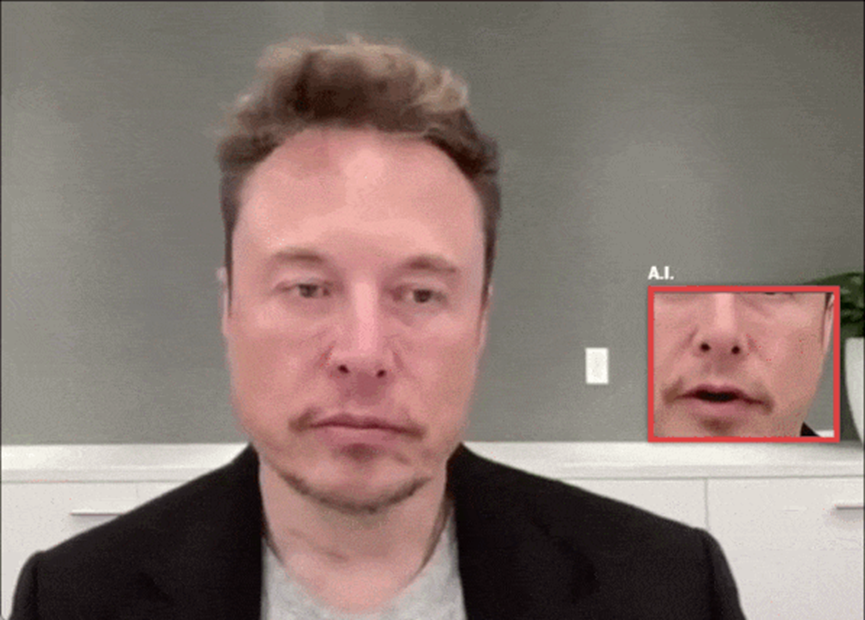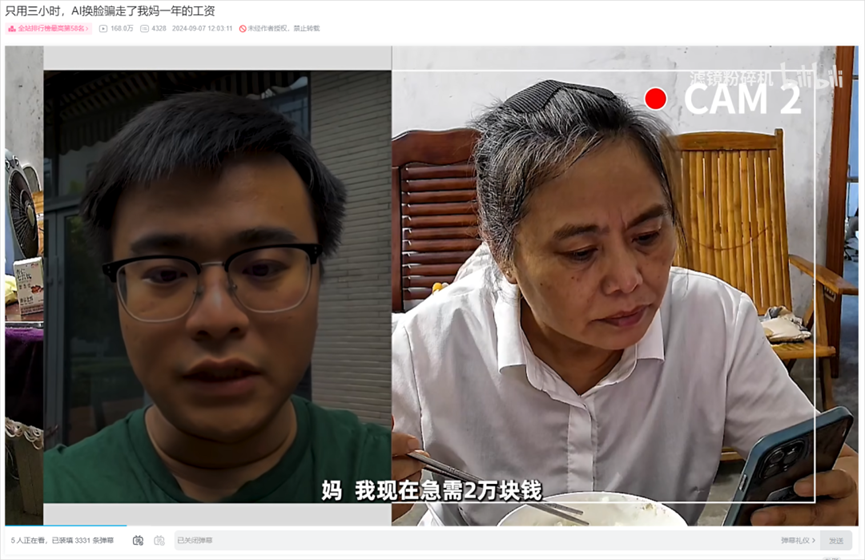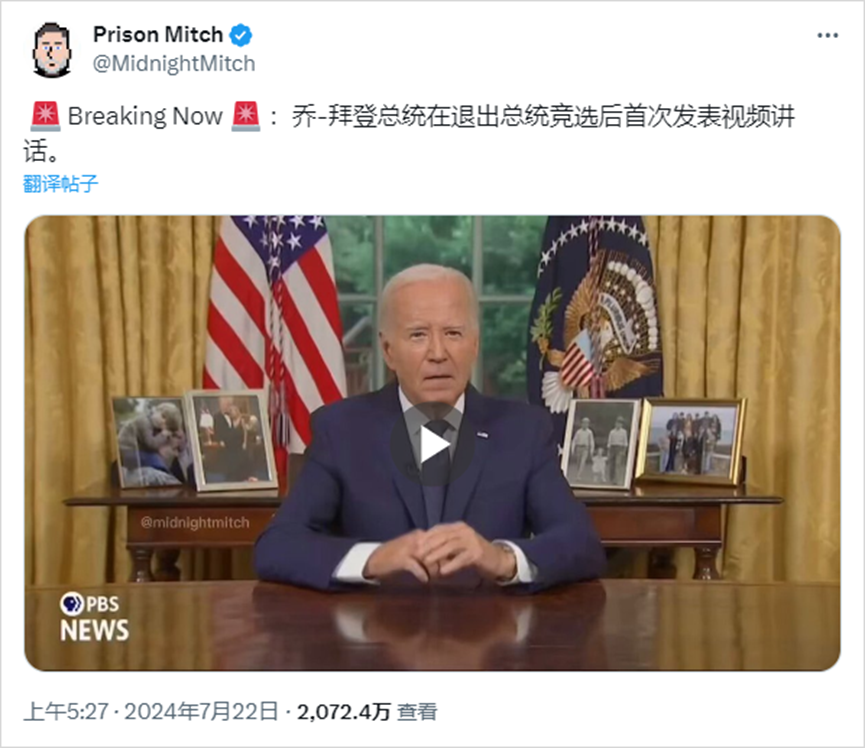Mythe Noir ! Pouvez-vous distinguer entre des vidéos réelles et des vidéos générées par IA ?

Pendant les vacances de la fête nationale cette année, certains utilisateurs d'Internet ont utilisé la technologie de l'IA pour cloner la voix de Lei Jun, lui faisant dire des propos critiques envers des comportements incivils ou exprimant des mécontentements envers d'autres. Certains plaisantaient en disant qu'ils étaient "suppliés par l'IA Lei Jun pendant toute la durée des vacances". En réponse, Lei Jun a publié aujourd'hui une vidéo dans laquelle il déclare se sentir assez dérangé et mal à l'aise. Il espère que les gens arrêteront de faire cela, estimant que ce n'est pas une bonne chose, tout en considérant que la technologie IA est réellement impressionnante et utile.
()
Récemment, j'ai participé à un test sur les vidéos générées par IA, et les résultats m'ont surpris. En tant que créateur de contenu spécialisé dans l'IA, j'ai obtenu seulement 60 points en tentant de distinguer l’authenticité de dix vidéos. Pour moi, c'était très difficile. Fait intéressant, les scores de mes amis variaient également, le meilleur étant de 90 points. Cette expérience m'a fait réaliser à quel point la technologie de production vidéo par IA se complexifie, rendant difficile la distinction entre une vidéo réelle et une vidéo falsifiée.
Les dangers des vidéos générées par IA
Avec la prolifération de la technologie de l'IA, les escroqueries basées sur de fausses vidéos se multiplient. Par exemple, un homme retraité de 82 ans a été trompé par une prétendue entreprise de devises utilisant un "AI Elon Musk", perdant ainsi 690 000 dollars de ses économies de toute une vie.

Ces incidents ne sont pas rares en ligne. Par ailleurs, sur Bilibili, un créateur a utilisé une technologie d'animation labiale IA pour tromper sa mère, entraînant une perte de 20 000 yuan.

En outre, une vidéo de Biden vue sur la plateforme sociale X en juillet a également été révélée comme étant un faux généré par IA. Lorsqu'il a été dévoilé, cela a suscité des réactions de rire et de larmes, mais les risques de sécurité sous-jacents demeurent alarmants.

État actuel de la technologie vidéo IA
Aujourd'hui, la barrière pour créer des vidéos par IA est pratiquement inexistante. L'année dernière, il y avait du scepticisme concernant la technologie de transfert de visages et la synchronisation labiale, mais en un an, ces outils sont devenus simples et efficaces. Les utilisateurs ordinaires peuvent facilement générer des vidéos réalistes en téléchargeant un simple clip sur une application et en ajoutant des voix off. Cette tendance est particulièrement marquée sur des plateformes de vidéos courtes comme Douyin, où abondent des contenus IA intéressants mais souvent peu fiables.
Tout en discutant des vidéos générées par IA, il convient de mentionner qu'XXAI s'apprête à proposer une mise à jour épique la semaine prochaine. Cette mise à jour renforcera les fonctionnalités existantes et ajoutera des modèles IA populaires tels que GPT-o1, perplexity, Grok et Gmini, permettant aux utilisateurs de découvrir diverses capacités d'IA pour seulement 9,9 dollars par mois, rendant ainsi cette technologie avancée plus accessible à un plus grand nombre de personnes.
Méthodes pour identifier les vidéos IA
Alors que les vidéos falsifiées se répandent, apprendre à les identifier devient urgent. Je pense qu'il y a deux méthodes simples et pratiques à retenir :
Observez les lèvres et les dents
Imaginez un acteur jouant à la marionnette. En observant les lèvres de la marionnette dans une vidéo, vous pouvez remarquer que les contours autour des lèvres sont flous, bien qu'il arrive également qu'il y ait des tremblements subtils. Avec la technologie IA actuelle, le mouvement des lèvres ne peut souvent pas être parfaitement synchronisé, en particulier dans la représentation des dents, qui peuvent apparaître comme dupliquées ou peu naturelles. Faire attention à ces détails permet généralement d'améliorer la capacité à distinguer l'authenticité.
Observez la répétition des mouvements
Cette méthode peut ne pas être très utile pour les créateurs de contenu qui mettent à jour leurs vidéos fréquemment, mais elle peut être efficace pour de nombreux avatars numériques 2D. Par exemple, les avatars IA ayant des entretiens tendent souvent à ne répéter que quelques mouvements fixes, parfois en affichant des gestes inappropriés ou des regards détournés. Porter attention à ces signaux subtils pourrait nous aider à identifier les contenus générés par IA qui semblent artificiels.
**Conclusion**
À mesure que la technologie des vidéos générées par IA mûrit, les problèmes liés aux vidéos falsifiées continueront à croître sur les réseaux sociaux. Les réglementations actuelles ne suivent pas l'évolution rapide de cette technologie, ce qui constitue un terrain propice pour certains individus peu scrupuleux. Il devient donc crucial d'approfondir la compréhension du public sur la technologie de l'IA, car cela est essentiel pour lutter contre la désinformation. Chacun d'entre nous a la responsabilité d'améliorer ses compétences d'identification. Dans cette ère de changements rapides, restons vigilants pour reconnaître la vérité et ne pas simplement accepter des informations superficielles. Se protéger ainsi que les autres tout en naviguant dans cette technologie constitue, en fin de compte, une véritable sagesse.